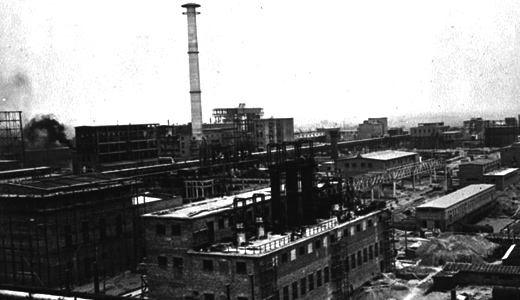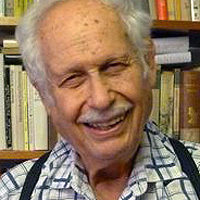Bob Charles Say's
These Companies are designing Drugs and More to Reduce the Population of the World
Read about how this all started !

Bayer’s new deal to buy Monsanto breaks records not only due to its size but because of its evil smell – and not only due to Monsanto’s reputation for deadly trails of everything from disappearing wild flowers and butterflies to poverty-stricken family farmers forced to buy its seeds and pesticides.
Bayer, perhaps best known for its aspirins or other useful medicines, also has a trail marked with death, but in far, far greater numbers. It was Bayer, together with two other chemical giants, BASF and Hoechst, which developed the terrible chlorine gas used in World War I. In 1925, the three formed a giant cartel, IG Farben, which became the world’s leader in pharmaceuticals, dyes, and chemicals.
During the early 1930s, IG Farben became the single largest donor to the election campaign of Adolf Hitler. Although it was slightly reluctant at first, because some of its key scientists were Jewish, in the decisive year before Hitler won power, IG Farben donated 400,000 marks to him and his Nazi party. This was amply rewarded. IG Farben, with Bayer, became the single largest profiteer of German conquests in World War II.
Hitler’s partner
In a letter to IG Farben manager Fritz ter Meer in early 1941, Dr. Otto Ambros praised IG Farben’s friendship with the SS in speeding construction of its Auschwitz-Buna plant and wrote of a banquet given by the camp management where “all measures were worked out for utilizing the truly outstanding management of the concentration camp to the best advantage of the Buna factory.”
Although Auschwitz was the largest, most fearful site in history for annihilating human beings, its basic goal had been the creation of a giant IG Farben complex to produce synthetic petrol and rubber as part of Germany’s plans to conquer Europe and the world.
IG Farben was not only interested in fuel and rubber, however. Correspondence between Bayer managers and the Auschwitz commander included such exchanges as:
“With a view to the planned experiments with a new sleep-inducing drug we would appreciate it if you could place a number of prisoners at our disposal,”
“We confirm your response, but consider the price of 200 RM [reichsmarks] per woman to be too high. We propose to pay no more than 170 RM per woman. If this is acceptable to you, the women will be placed in our possession. We need some 150 women,”
“We confirm your approval of the agreement. Please prepare for us 150 women in the best health possible,”
“Received the order for 150 women. Despite their macerated condition they were considered satisfactory. We will keep you informed of the developments regarding the experiments,”
“The experiments were performed. All test persons died. We will contact you shortly about a new shipment.”
IG Farben also had another interest in Auschwitz. For those too old, too small, or too weak to work, it had Zyklon B, designed and produced by an IG Farben subsidiary, Degesch.
When their conquest plans collapsed and their genocide was ended, the world expected that such men would be punished, and in August 1947 the U.S.-organized Nuremberg War Criminal Tribunal against IG Farben began, with U.S. prosecutor Telford Taylor stating: “These IG Farben criminals, not the lunatic Nazi fanatics, are the main war criminals. If the guilt of these criminals is not brought to light and if they are not punished, they will represent a much greater threat to the future peace of the world than Hitler if he were still alive.”
But the atmosphere in Germany had changed; old foes were replaced by new ones. In July 1948, after nearly a year, 10 of the 24 defendants were acquitted and 13, though found guilty on some of the charges of mass murder, slavery, and crimes against humanity, were sentenced to mild prison terms of one-and-a-half to eight years, including time already served.
Back to business
IG Farben was also split up. But its three main components, now separate again, and urgently needed in a quickening cold war, grew until each one became 20 times bigger than IG Farben as a whole was at its height in 1944, the last year of the war.
By 1952, the new West German government of Konrad Adenauer had amnestied and released the last of those imprisoned, who were soon back in leading positions in the world of chemicals and pharmaceuticals.
As for the two men quoted in the letter above, Fritz ter Meer, a managing board member at IG Farben from start to finish, and as wartime manager responsible for IG Auschwitz, said at the trial, defending himself: “Forced labour did not inflict any remarkable injury, pain or suffering on the detainees, particularly since the alternative for these workers would have been death anyway.”
A few years after his release from prison, Fritz ter Meer was reinstated as a managing board member of Bayer. All three sibling firms BASF, Bayer, and Hoechst (which later merged with the French company to form Aventis) soon filled their highest positions with former Nazis.
The man who wrote the above letter, Otto Ambros, who had been responsible for the choice of location, planning, building, and running of IG Auschwitz as operations manager, got – for enslavement – the “toughest” sentence, eight years. After his release in 1952 he became, one after the other, deputy chairman, chairman, or member of the board in a dozen chemical companies.
Best-known was Chemie Grünenthal, which was guilty of selling the thalidomide drug (or Contergan) long after it seemed evident that, if taken by pregnant women, their babies could suffer from missing limbs or other deformities. Until 1959, it was sold in 46 countries with a label that it could be “given with complete safety to pregnant women and nursing mothers.” Up to 10,000 children were affected.
In 2008, researchers in England discovered a link between thalidomide and drugs researched during the war, quite probably one of those developed under the leadership of Otto Ambros during nerve gas research. Until then the company always claimed that previous research data had been lost, presumably during the war.
Untroubled by doubts, the U.S. Department of Energy (formerly the Atomic Energy Commission), hired Ambros as a consultant on coal hydrogenation based on IG Farben research. Asked about hiring a convicted war criminal, the department insisted that all relevant paperwork had been lost.
When a reporter for the San Francisco Chronicle asked Ambros in a telephone interview about his 1948 conviction at Nuremberg for mass murder and slavery, he answered: “That happened a very long time ago. It involved Jews. We do not think about it any more.”
Today’s Bayer
Those wartime IG Farben men are all dead, but their companies flourish. And Bayer has been accused in recent years of unethical medical experiments, selling drugs shown to be risky, hindering developing countries from developing vital medications, and using imported materials produced by child labour.
The most serious charge, perhaps, is that a Bayer subsidiary, H.C. Starck, was partly responsible for the long, bloody civil war in the Democratic Republic of Congo, which involved the winning of various minerals but above all the valuable coltran, of which it is the main producer.
Until now, sibling BASF was the largest chemical firm in the world. If the deal holds, it will now be overtaken by Bayer-Monsanto.
Any hopes that Bayer will somehow be bettered in its ways under the influence of Monsanto seem at the least unrealistic.
Photo: The IG Farben plant in Monowitz, near Auschwitz. | Holocaust Research Project


We knew about this a Long Time Ago but we never Mentioned it on our Shows incase it would bother someone Listening, However with all that is going on now ( Dis-Respect for the Office of the President, any President, or Politicians Want-To-Be Presidents giving away Freebies to Entice the American People under their Slavery by Congress and loosing Freedoms ) I thought it was about time to see what RETAIL STORES are selling and Advertising for Public Use while Europe Banned it.
ReplyDeleteThe term rehab is a truncated adjustment of 'rehabilitation'. During rehab, clients will encounter an altered treatment program which intends to free their plan of alcohol with the objective that they can stop drinking and modify to an alcohol free life. Treatment when in doubt occurs in a specialist rehab office anyway non-private organizations are in like manner available.
ReplyDeleteTreatment when in doubt occurs in a specialist rehab office anyway non-private organizations are in like manner available.
The term rehab is a truncated adjustment of 'rehabilitation'. During rehab, clients will encounter an altered treatment program which intends to free their plan of alcohol with the objective that they can stop drinking and modify to an alcohol free life. Treatment when in doubt occurs in a specialist rehab office anyway non-private organizations are in like manner available.
ReplyDeleteinspirational quotes for drug addiction
recovery quotes inspirational
Drug rehab facilities over the United States help a huge number of addicts accomplish enduring moderation consistently. With the acknowledgment that enslavement is a neurological illness, drug rehab authorities have had the option to build up an assortment of compelling and demonstrated treatments for substance victimizers. Habit isn't treatable, yet addicts and specialists can cooperate to make long haul techniques for remaining clean.
ReplyDeletedrug rehab florida